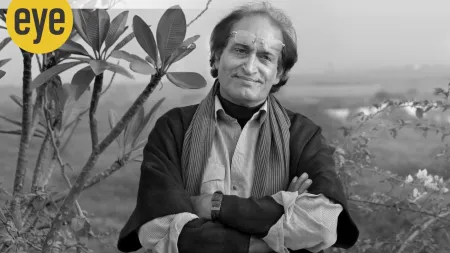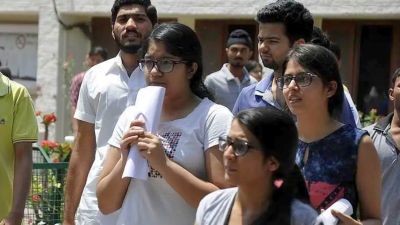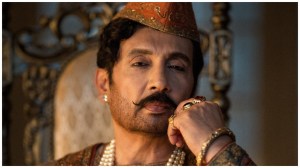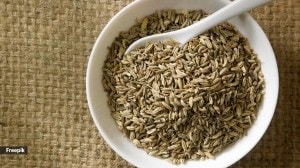- India
- International
Explained: Why the Char Dham Yatra is a risky pilgrimage
Tough terrains, high altitudes and changing weather conditions make the pilgrimage a tough one, especially for senior citizens. Here’s what you should do before planning to embark on the trip
 Pilgrims visit Badrinath Temple after it reopened for devotees, in Badrinath. (PTI)
Pilgrims visit Badrinath Temple after it reopened for devotees, in Badrinath. (PTI)Since the start of the Char Dham Yatra in Uttarakhand on May 3, at least 23 pilgrims have died en route, mainly due to cardiac-related issues like heart attack, hypertension, or other comorbidities. According to the state health department data, 10 pilgrims died while on their way to Yamunotri, six en route to Kedarnath, three to Gangotri, and one to Badrinath.
A majority of those who died were above 60 years of age, suffered from cardiac-related issues, and faced difficulties going to the shrines situated at high altitudes, ranging between 10,000 ft and 12,000 ft.
In 2019, around 38 lakh pilgrims undertook the yatra and over 90 pilgrims had died. In 2017 and 2018, 112 and 102 pilgrims died respectively.
Over 3 lakh devotees have already visited the Char Dham this year.
How tough is the terrain?
The four holy pilgrimage centres on the Char Dham Yatra in Uttarakhand are situated at high altitudes in the Himalayan region. Those visiting are affected by sudden low temperature, low humidity, increased ultraviolet radiation, low air pressure, and low oxygen levels.

The pilgrimage sites are Yamunotri and Gangotri in Uttarkashi district, Kedarnath in Rudraprayag and Badrinath in Chamoli. While Kedarnath is the highest at around 11,700 ft, Gangotri is the lowest at around 10,200 ft. The extreme heights, elevated treks, and changing weather conditions cause high chances of mountain sickness.
Prakhar Pandey, an engineering student from IIT Varanasi, who recently completed the Kedarnath trek, said that the massive rush of devotees on the 16 km trek causes a lot of exertion. The Kedarnath trek is considered one the riskiest in India.
“To reach Kedarnath, people park their vehicles at Sonprayag. From there, there are government vehicles to take devotees to Gaurikund (around 8 km) but as these vehicles are limited in number, most people choose to walk. The 16 km trek starts there. The lanes are narrow and sometimes, passing horses hurt people. The shortcuts have high elevation and take a heavy toll on the body. In the last 8-10 km, the oxygen level and the temperature drop suddenly. If your body isn’t prepared for it, it could be fatal,” he said.
In order to understand the risks involved, we need to understand how different the higher altitude regions are. The air we breathe comprises different molecules, with nitrogen (78 per cent) and oxygen (21 per cent) in the largest quantity. This composition of air remains consistent at the ground level.
However, with an increase in altitude, the partial pressure of oxygen, or number of oxygen molecules in a given volume of air, changes. At high altitudes, the oxygen molecules are further apart because of less air pressure that pushes them closer. This means, there are fewer oxygen molecules in the same amount of air we intake.
How does it affect the body?
When exposed to low oxygen, our body responds and we start trying to breathe in more air in an attempt to increase oxygen uptake. However, there is still less oxygen throughout the circulatory system, and a lesser amount of oxygen reaches our muscles. Due to low humidity, within the first few hours of altitude exposure, water loss also increases, resulting in dehydration. After some time, our bodies begin to adjust to the low-oxygen level, and haemoglobin levels increase along with the ratio of blood vessels to muscle mass.
According to Dr Ajay Khanna, Indian Medical Association (IMA) state secretary, the effect of lower oxygen and the higher altitude varies according to age, and the symptoms vary from person to person. For older people and people with comorbidities, the effects are serious. The degeneration of coronary arteries, which supply blood to the heart muscles, starts after 25 years of age. For the elderly, the risk is more because the tolerance to stress is low and blockage in the arteries is more.
If the person is diabetic, the person might die due to lactic acidosis. Most of the deaths are due to cardiovascular respiratory arrest. These are caused mainly when the electrical system of the heart malfunctions. This malfunction causes an abnormal heart rhythm such as ventricular tachycardia or ventricular fibrillation. Some cardiac arrests are also caused by the extreme slowing of the heart’s rhythm.
“A sudden change in temperature adds to the problems due to the shrinkage of coronary vessels. This reduces the blood supply in the body. In such a condition, when we do physical activity, it further affects the body. There is another misconception, that it is easier for athletic people. People who regularly go to the gym need more oxygen for daily metabolism. If a person has hyperthyroidism and is super slow, the person will compensate easily,” said Khanna.
What precautions can be taken?
The most important step before planning the yatra is getting a medical test done and keeping all required medicines in hand. The elderly, those with comorbidities and those recovering from Covid-19 should ideally avoid undertaking the yatra, or at least postpone it.
Those embarking on the yatra should ensure to take rest for a day on the trek. In general, the rule should be, no more than 800-1000 metres of elevation gain per day for the body to get adjusted to lower oxygen levels. Those suffering from heart ailments, respiratory illness, diabetes and high blood pressure should be extra cautious.
In case of symptoms like headache, nausea, elevated heartbeat, vomiting, darkening of limbs and lips, tiredness, or problem in breathing or cough, immediate medical help should be taken. As per a government claim, none of the 23 people who died were taken to the hospital in time.
Newsletter | Click to get the day’s best explainers in your inbox
Before starting the yatra, devotees should ensure they are carrying warm clothes and use sunscreen (SPF 50) during the day. Sunglasses should also be used. Regular drinking of water and consumption of food is mandatory. Altitude can increase metabolism while suppressing appetite. This means we need to eat more than we feel like to maintain a neutral energy balance. Smoking and oily food should be avoided.
According to state data, all the pilgrim deaths reported in the district are of devotees travelling on foot. “There is an elevation on these trekking paths and when people keep walking, they do not realise the sudden decrease in oxygen level. People keep moving without enough rest and then complain of dizziness. This is why proper rest after every few kilometres of trek is needed,” said Dr K S Chauhan, CMO Uttarkashi district.
More Explained
EXPRESS OPINION
May 05: Latest News
- 01
- 02
- 03
- 04
- 05







































